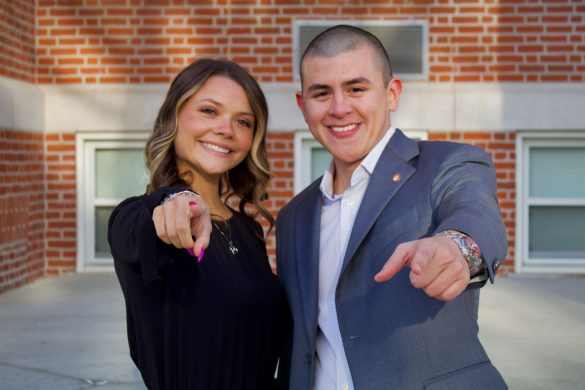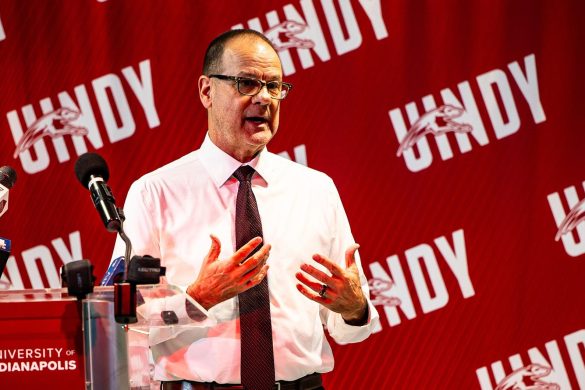Over the past 20 years, the number of opioid-related deaths in Indiana has risen by over 500 percent, according to the state’s opioid epidemic web hub.
In 1999, 43 opioid-related deaths were reported in Indiana, and in 2017, the year with the most recent data available, that number rose to 1,176, according to the Indiana Department of Health.
According to Vice President of Community Behavioral Health for Community Health Network and CEO for Gallahue-Community Mental Health George Hurd, the epidemic was magnified following the introduction of fentanyl, a synthetic opioid, which led to an increase in the number of deaths.
He said that health professionals are currently trying to help with the crisis, but due to a lack of licensed professionals, the effect of their help is not as impactful as they continue hoping for.
“We know that we cannot really bend the curve on addictions problems unless we’re able to offer what’s called Medication-Assisted Treatment and Medication-Assisted Treatment for opioid addiction isn’t enough,” Hurd said. “We know for the most success, a person has to not only receive Medication-Assisted Treatment, they [also] have to be in therapy. It’s when you have the combination of the two that people have the best results because this [addiction] is a lifelong illness.”
In response to the epidemic, along with the continuing problem of addiction, Community Health Network has partnered with the University of Indianapolis, the Indiana University School of Social Work at Indiana University-Purdue University Indianapolis and Ascend Indiana to create the Community Behavioral Health Academy. The academy is designed to train more licensed clinical social workers to help with treating those who have been diagnosed with substance use disorder, according to UIndy’s press release. The academy, which was made possible by a grant from the Richard M. Fairbanks Foundation, is expected to produce 15 to 30 behavioral health professionals a year. They have a dual license as both a Licensed Clinical Social Worker and as a Licensed Clinical Addiction Counselor.
The origins of the Community Behavioral Health Academy date back to around 2014 to 2015 when behavioral health professionals at Community began to notice that the demand for behavioral healthcare was higher than the number of therapists they had available to give treatments, according to Hurd. He said Community’s initial response was to try to hire more behavioral health professionals, however, this did not go as they intended. Hurd said that it was only after they studied it through a grant from the Richard M. Fairbanks Foundation, that they found that they were lacking 7,000 licensed therapists. These therapists typically work with patients that have addictions and substance abuse issues.
“With the opioid epidemic going on, there’s a higher need for [treatment] than ever, but that requires pretty specialized training,” Hurd said. “All therapists can do some work around substance-use disorder, but to really specialize in that, there’s extra required trainings that a lot of them need. And [with] our current workforce, not a lot of those people had the extra required training.”
UIndy and IUPUI both became involved in the academy as a result of a Request for Information, Hurd said. The Request for Information was sent out to several universities. UIndy and IUPUI sent back proposals that Community liked because of their locations and their professional relationships, Hurd said.
“[What] we said is we want to work with a partner because this is going to take probably changing curriculums…and changing class structures,” Hurd said. “We felt like our partnership in the past with UIndy really made them an excellent partner to be able to sit down and work through what I think was a pretty big issue and that was ‘How do we change curriculums?’”
Hurd said he thought it would be a good opportunity for students because it would lead to them being more qualified in the behavioral health field. He also said that while they are asking students to do a lot of work in a concentrated amount of time, they are not asking them to take a lot of extra classes.
“We realize that we’re asking students to do something kind of extraordinary: be a part of this academy,” Hurd said. “We want to really retain this workforce and incentivize people to do this kind of clinical academy pathway.”
UIndy Master of Social Work Program Director and Associate Professor of Social Work Sally Brocksen said that the partnership with Community Health will provide more opportunities for UIndy students to gain career experience and lead to similar partnerships with the nursing and the physical therapy programs. She said that the program will create a workforce pipeline for Community Health.
“With the opioid epidemic going on, there’s a higher need for [treatment] than ever…”
“It [the academy] benefits our state and our communities because Community Behavioral Health…is such a huge provider of services in the Indianapolis region and Indiana,” Brocksen said. “Having the best prepared social workers we can to meet the needs and the challenges of our community, [and] having them prepared so well, is really just going to be a benefit to everyone.”
Brocksen said that students who enroll in the academy have to first be accepted into the MSW program, which is typically a two-year program. Once the students have made it halfway through their first year, they are then asked about their future career plans. This could lead to an internship with Community during their final two semesters.
Hurd said that he expects to see the effects of the academy quickly as the program gets underway. He said he thinks other organizations will to try and replicate what Community has done with their partnership in the near future.
“It’s really drawn a lot of interest from around the state,” Hurd said. “We start selecting our first cohort [of students] in a couple of weeks so that in the fall, these students will start their class work with this new curriculum track, and we can then start taking them as interns.”
Brocksen said that the program will serve as a great template for other organizations to use to help combat the opioid epidemic. She said that it could also serve as a resource for other types of work that social workers do within healthcare systems.
“Often times social workers are responsible for discharge planning,” Brocksen said. “When you do your discharge planning, [you’re] helping to ensure that you don’t get those bounce-back folks, that someone’s care is being appropriately planned and treated once they leave the hospital or outside of their regular visits with the doctors. I think that partnerships such as this, really sort of set it up for patient success—long-term patient success—and I think Community Health credits…very clearly, that most social work has success in the outcomes of their patients, and that’s why they’re investing in social work.”









